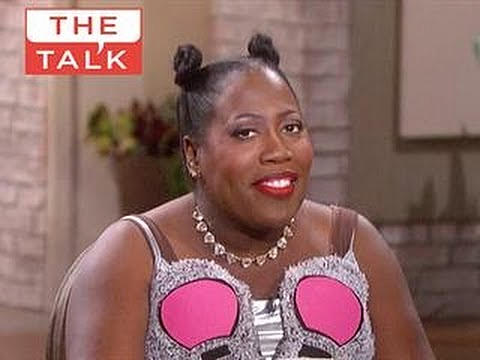
Producer of Grey's Anatomy, Scandal, and How to Get Away With Murder, Shonda Rhimes, has succeeded in tackling what seems to be problematic--a lack of sophisticated black women on television--by casting immensly talented, appearingly strong, attractive black women in starring roles. However, Rhimes, for the moment, is alone in what is perhaps her quest to annihilate the myth of the scissorbill, buffoonish black woman.
In Susan Douglas', Where the Girls Are, she writes, "...But since the sexuality of black people has always been deeply threatening to white folks, black characters in popular culture also have been desexualized, the earth-mother mammy being a classic example. (p. 95)." Nell Carter from the 1980's sit-com, Gimmie A Break also embodied a non-sexually threatening quality. Before her, actress,Hattie McDaniel. The media's incessant need to desexualize Black women is not humiliating, as it used to be to me, but flattering that an entire industry would find my race so intimidating that they would mask it with showcasing, what they believed, our worse for the world to see. These images did such an impeccable job of brainwashing Black people, a great many of us believe that, in everyday life, White people have the monopoly on everything sophisticated. This means (to some): tallness, thinness, articulateness, intelligence, education, and simply the right to be represented in the best light possible. I made a conscious decision to think in a way that was the total antithesis of my peers. But, what about those who are too young to compartmentalize and are without the life experience needed to define themselves? How have all those images them?
Disney characters are not innocent in their indoctrination of what they want our society to think about women and people of color. In Pocahontas, the audience gets to see darker-skinned Indian women who are drawn to not fit the standards of traditional beauty. Their features are not as fine as Pocahontas and one female character is overweight and being made the to be the undesirable buffoon. Douglas writes, "When mothers cling to The Little Mermaid as one of the few positive representations of girls, we see how far we have not come. (p. 296)" She states that even though the little mermaid is an independent thinker and strong, her waistline is unrealistic, and that "...and her salvation comes through her marriage--at the age of sixteen..." Douglas believes that Disney stereotypically describes the Black woman with drawing "...an older, overweight woman with too much purple eyeshadow and eyeliner, a female octopus who craves too much power and whose nether regions evoke the dreaded vagina dentate." Douglas points to Beauty And the Beast to show that, once again, a young woman seeks a better life through marriage, but my quibble is over the female character falling in love with a beast. Why couldn't it have been he who falls in love with a female beast? Do we take away our little girls' choices when we subject them to these images?
A link to my project: http://lawtonheather.wix.com/mediaproject
A link to just my video: https://vimeo.com/114406773
In Susan Douglas', Where the Girls Are, she writes, "...But since the sexuality of black people has always been deeply threatening to white folks, black characters in popular culture also have been desexualized, the earth-mother mammy being a classic example. (p. 95)." Nell Carter from the 1980's sit-com, Gimmie A Break also embodied a non-sexually threatening quality. Before her, actress,Hattie McDaniel. The media's incessant need to desexualize Black women is not humiliating, as it used to be to me, but flattering that an entire industry would find my race so intimidating that they would mask it with showcasing, what they believed, our worse for the world to see. These images did such an impeccable job of brainwashing Black people, a great many of us believe that, in everyday life, White people have the monopoly on everything sophisticated. This means (to some): tallness, thinness, articulateness, intelligence, education, and simply the right to be represented in the best light possible. I made a conscious decision to think in a way that was the total antithesis of my peers. But, what about those who are too young to compartmentalize and are without the life experience needed to define themselves? How have all those images them?
Disney characters are not innocent in their indoctrination of what they want our society to think about women and people of color. In Pocahontas, the audience gets to see darker-skinned Indian women who are drawn to not fit the standards of traditional beauty. Their features are not as fine as Pocahontas and one female character is overweight and being made the to be the undesirable buffoon. Douglas writes, "When mothers cling to The Little Mermaid as one of the few positive representations of girls, we see how far we have not come. (p. 296)" She states that even though the little mermaid is an independent thinker and strong, her waistline is unrealistic, and that "...and her salvation comes through her marriage--at the age of sixteen..." Douglas believes that Disney stereotypically describes the Black woman with drawing "...an older, overweight woman with too much purple eyeshadow and eyeliner, a female octopus who craves too much power and whose nether regions evoke the dreaded vagina dentate." Douglas points to Beauty And the Beast to show that, once again, a young woman seeks a better life through marriage, but my quibble is over the female character falling in love with a beast. Why couldn't it have been he who falls in love with a female beast? Do we take away our little girls' choices when we subject them to these images?
A link to my project: http://lawtonheather.wix.com/mediaproject
A link to just my video: https://vimeo.com/114406773
No comments:
Post a Comment
Note: Only a member of this blog may post a comment.